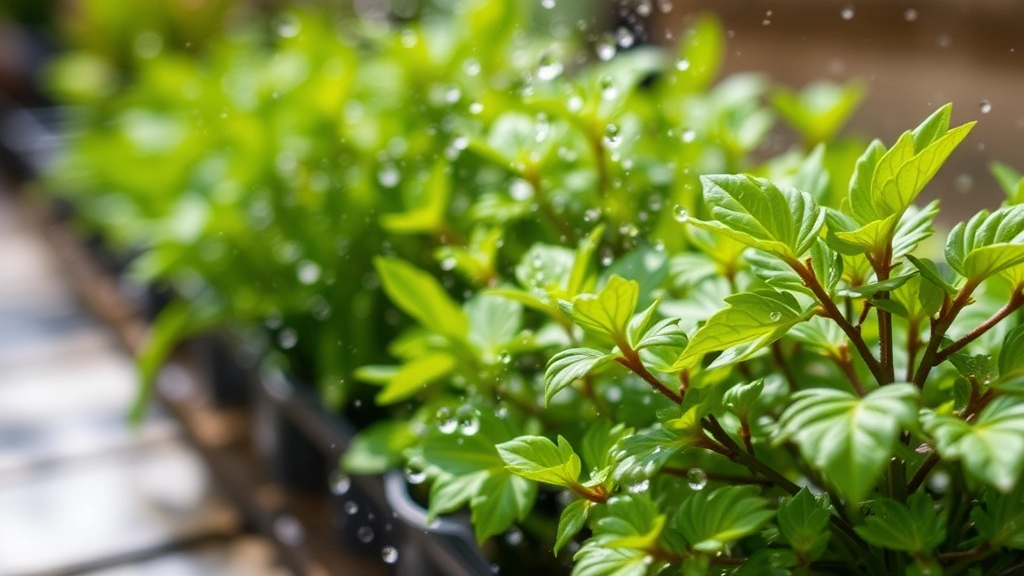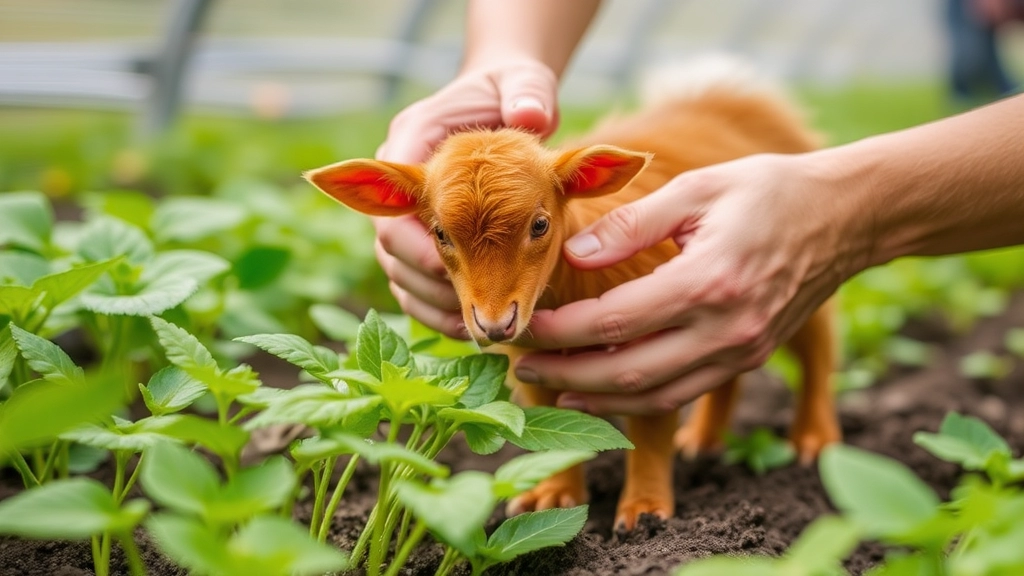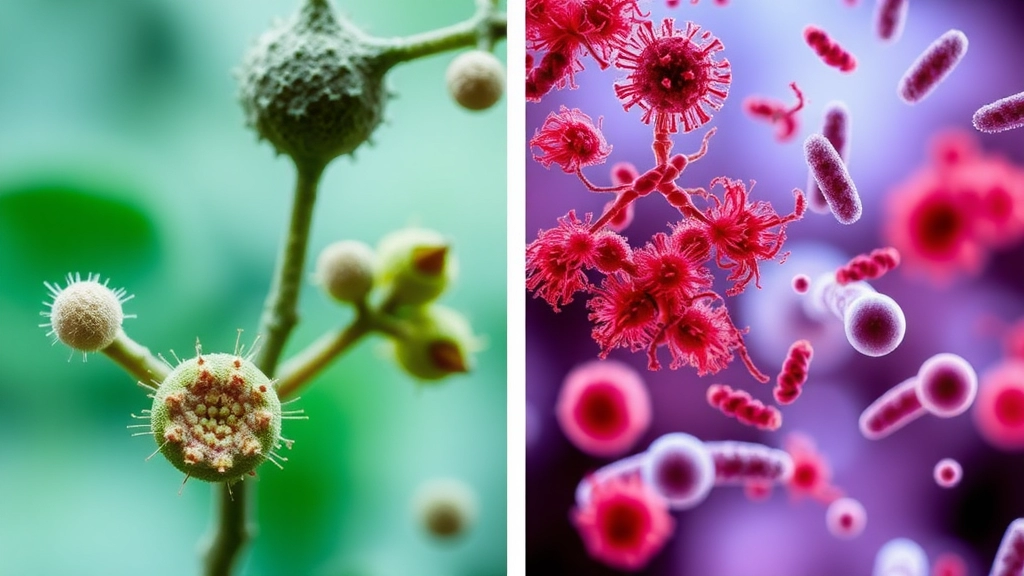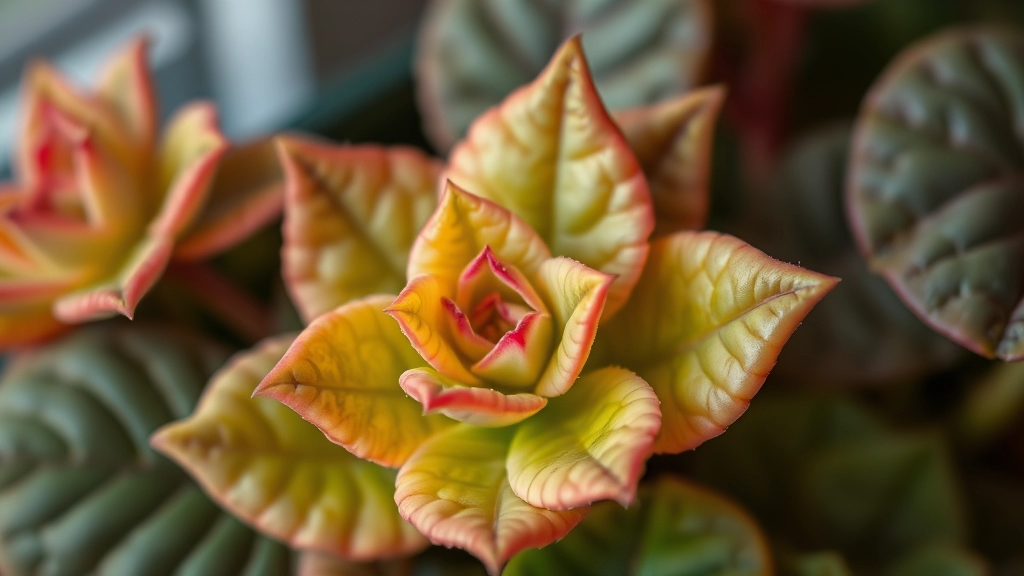Kalanchoe Care: Understanding Soft Leaves
Are you puzzled by your kalanchoe’s suddenly soft leaves? You’re not alone in this plant parent predicament! As an avid succulent enthusiast, I’ve encountered this issue numerous times and understand the frustration it can cause. In this comprehensive guide, we’ll explore the common culprits behind soft kalanchoe leaves and provide practical solutions to revive your plant.
From overwatering woes to sneaky pest invasions, we’ll cover all the potential reasons your kalanchoe’s leaves are losing their firmness. Whether you’re a seasoned plant keeper or a budding green thumb, this article will equip you with the knowledge to diagnose and treat your kalanchoe’s ailment. Let’s dive in and get those leaves back to their plump, healthy state!
Common Causes of Soft Kalanchoe Leaves
Hey there, plant pals! If you’re scratching your head over your Kalanchoe’s soft leaves, you’re not alone. I’ve been there, and it’s a head-scratcher for sure. Let’s dive into what’s making your succulent go all squishy on you.
The Usual Suspects
Soft Kalanchoe leaves are like a plant’s way of waving a white flag. It’s saying, “Hey, something’s not right here!” But what’s the deal? Well, there’s a whole lineup of potential troublemakers:
- Watering woes (too much or too little)
- Temperature tantrums
- Soil that’s not up to snuff
- Fertilizer faux pas
- Uninvited pest parties
- Sneaky diseases
Each of these can turn your sturdy succulent into a sad, droopy mess. But don’t worry, we’re gonna break it all down and get your plant back in fighting shape.
Why Should You Care?
Look, healthy Kalanchoes are tough cookies. They’re supposed to have firm, plump leaves that can take a beating. When they go soft, it’s like your plant’s sending up a flare. Ignore it, and you might end up with a plant that’s pushing up daisies.
Quick Check: Is It Really Soft?
Before we go any further, let’s make sure we’re on the same page. Gently squeeze a leaf. If it feels mushy or gives way easily, yep, you’ve got soft leaves on your hands. Healthy leaves should feel firm and a bit rigid.
The Bottom Line
Soft Kalanchoe leaves are a symptom, not the problem itself. It’s your plant’s way of saying, “Hey, fix me!” The good news? Most causes are totally fixable if you catch them early.
In the next sections, we’ll dig into each cause and how to sort it out. Stick with me, and we’ll have your Kalanchoe back to its perky self in no time. Ready to play plant detective? Let’s go!
Overwatering: The Primary Culprit

Hey, let’s talk about the number one reason your Kalanchoe’s leaves are going soft: overwatering.
It’s like drowning your plant in kindness. Too much of a good thing, right?
Here’s the deal:
- Kalanchoes are succulents. They’re built for dry spells.
- Their roots hate sitting in water. It’s like us wearing wet socks all day. Ugh.
- Overwatering leads to root rot. That’s bad news bears for your plant.
So, how do you know if you’re overdoing it?
Look for these signs:
- Soft, mushy leaves
- Yellowing leaves
- A soggy, heavy pot
- Mold on the soil surface
Here’s a pro tip: stick your finger in the soil. If it’s still damp, hold off on watering.
Remember, it’s easier to save an underwatered Kalanchoe than an overwatered one. If you’re dealing with brown leaves on your Kalanchoe, it might be a sign of overwatering or other issues.
Let’s break the cycle of overwatering and give your Kalanchoe the TLC it really needs. If you’re new to Kalanchoe care, you might want to learn more about the Flaming Katy Kalanchoe blossfeldiana, a popular variety known for its vibrant flowers.
Underwatering: A Hidden Threat
Let’s talk about something that might be sneaking up on your Kalanchoe – underwatering. It’s not always the first thing we think of when our plants look a bit sad, but trust me, it’s a real issue.
Why Underwatering Happens
Look, we’ve all been there. Life gets busy, and suddenly you realize it’s been a week (or two) since you last watered your plants. With Kalanchoe, this can be a bigger problem than you might think.
- Forgetting to water
- Thinking succulents need less water than they do
- Not adjusting watering schedule for hotter weather
Signs Your Kalanchoe is Thirsty
So how do you know if underwatering is your problem? Here are some dead giveaways:
- Soft, droopy leaves (yeah, I know, that’s why you’re here)
- Wrinkled or puckered leaf surface
- Slower growth or no new growth
- Dry, crispy leaf edges
The Domino Effect of Underwatering
Here’s the thing – when your Kalanchoe doesn’t get enough water, it’s not just the leaves that suffer. The whole plant starts to shut down:
- Roots can’t absorb nutrients properly
- Plant becomes more susceptible to pests and diseases
- Flowering might be delayed or not happen at all
How to Fix It
Alright, so you’ve figured out your Kalanchoe is thirsty. Now what? Don’t panic and drown it! Here’s what to do:
- Give it a good soak, but make sure the pot has drainage holes
- Wait until the top inch of soil is dry before watering again
- Consider using a moisture meter if you’re unsure
Pro Tip: If the soil has become really dry and hard, water might just run straight through. In this case, try bottom watering – sit the pot in a tray of water for about 30 minutes.
Remember, finding the right watering balance is key. Too much, and you’re back to the overwatering problem we talked about earlier. Too little, and, well, you’re right back here.
Underwatering might be a hidden threat, but now you know what to look for and how to fix it. Your Kalanchoe will thank you with perky leaves and beautiful blooms. Keep an eye on those leaves, and you’ll be golden!
The Role of Temperature: Cold Stress and Heat Exposure

Hey, let’s chat about how temperature messes with your Kalanchoe’s leaves.
These succulents are pretty chill, but they’ve got their limits.
Too cold? Your Kalanchoe’s gonna throw a fit.
Too hot? Same deal.
Cold Stress: When Things Get Frosty
Kalanchoes hate the cold. Like, seriously hate it.
When temps drop below 10°C (50°F), you’re in trouble.
The leaves go soft and droopy. Not a good look.
In extreme cases, they might even turn black. Yikes!
Heat Exposure: When It’s Too Hot to Handle
On the flip side, scorching heat’s no friend either.
Anything above 35°C (95°F) is pushing it.
The leaves might get soft and wilted. Classic heat stress.
You might see brown spots on Kalanchoe leaves or crispy edges. Not ideal.
Finding the Sweet Spot
So what’s a Kalanchoe lover to do?
- Keep temps between 15-25°C (60-75°F). That’s the happy zone.
- Avoid sudden temperature changes. No drama, please.
- Move plants away from drafty windows in winter.
- In summer, give ’em some shade during the hottest part of the day.
Remember, happy temps = happy Kalanchoe = happy you.
Got any temperature horror stories with your plants? I’d love to hear ’em!
If you’re dealing with other issues, like Kalanchoe leaves curling up, temperature might not be the only factor to consider.
Soil and Drainage Issues: Getting the Mix Right
Let’s talk soil, folks. It’s not just dirt, it’s the lifeblood of your Kalanchoe. Get this wrong, and you’re in for a world of soft, sad leaves.
The Dirt on Soil
Here’s the deal: Kalanchoes are succulents. They’re not into that heavy, waterlogged soil life. They want it light, airy, and well-draining. Think sandy beaches, not muddy swamps.
What’s the perfect mix? I’ve found a blend of:
- 2 parts potting soil
- 1 part perlite or coarse sand
- 1 part coconut coir or peat moss
This combo gives your Kalanchoe the drainage it craves while holding onto just enough moisture.
Drainage: The Unsung Hero
Ever seen a pot without holes? That’s a Kalanchoe’s worst nightmare. No drainage = root rot city. And trust me, you don’t want to go there.
Quick tip: If your pot doesn’t have holes, grab a drill and make some. Your plant will thank you.
The Potting Predicament
Size matters, folks. A pot that’s too big is like giving your Kalanchoe an Olympic-sized swimming pool. It’ll hold too much water, and before you know it, you’re back to soft leaf central.
Go for a pot that’s just slightly larger than the root ball. It’s like a cozy sweater – snug, but not suffocating.
Signs Your Soil’s All Wrong
- Leaves turning soft and mushy? Your soil might be too heavy.
- Plant looking parched despite regular watering? Your mix could be too sandy.
- Water sitting on top of the soil? Time to add some perlite for better drainage.
Remember, getting the soil right is like setting up a solid foundation. Nail this, and you’re halfway to Kalanchoe success.
So, next time you’re repotting, give some thought to your soil mix. Your Kalanchoe’s leaves will stay firm and happy, and you’ll be the proud plant parent you’ve always wanted to be.
Overfertilization: When Too Much is Harmful

Ever heard the saying “too much of a good thing”? Well, it applies to fertilizing your Kalanchoe too.
I’ve seen it happen countless times. People think more fertilizer equals healthier plants. Big mistake.
Here’s the deal: Kalanchoes don’t need much feeding. They’re tough cookies.
Overfertilizing can lead to soft, droopy leaves. It’s like giving a kid too much candy – not good.
Why does this happen?
- Excess salts build up in the soil
- Roots get “burned”
- Plant struggles to absorb water
Signs your Kalanchoe is overfed:
- Leaf edges turn brown or yellow
- Slow growth or no growth at all
- White crust on soil surface
How to fix it:
- Stop fertilizing immediately
- Flush the soil with water
- Repot if necessary
Prevention is key. Stick to a light feeding schedule, maybe once a month during growing season.
Remember, less is more when it comes to fertilizing Kalanchoes. Keep it simple, and your plant will thank you. If you’re dealing with Kalanchoe leaves drying out, it might be a sign of overfertilization. For those interested in unique varieties, the Kalanchoe tomentosa, also known as Panda Plant, is a great choice that’s relatively easy to care for.
Pest Infestations: Common Pests Affecting Kalanchoe
Let’s chat about those pesky little critters that love to munch on our beloved Kalanchoe plants. Trust me, I’ve been there, and it’s not fun finding your plant under siege. But don’t worry, we’ll tackle this together.
Common Kalanchoe Pests
- Mealybugs: These cotton-like bugs are a real pain
- Spider mites: Tiny but mighty troublemakers
- Aphids: Small but can cause big problems
- Scale insects: They look like little bumps on the leaves and stems
Signs Your Kalanchoe Has Pests
Ever noticed your Kalanchoe looking a bit off? Here’s what to look out for:
- Yellowing or distorted leaves
- Sticky residue on leaves (thanks, aphids!)
- Webbing between leaves (spider mites’ calling card)
- White, fuzzy patches (mealybugs at work)
How These Pests Affect Your Kalanchoe
These little buggers can really do a number on your plant. They suck the sap right out of the leaves, making them soft and droopy. It’s like they’re stealing your plant’s life force!
Dealing with Kalanchoe Pests
Now, let’s get down to business. How do we kick these pests to the curb?
- Isolate the infected plant: Don’t let those pests spread to your other green babies!
- Give your Kalanchoe a shower: A strong spray of water can knock off many pests.
- Use insecticidal soap: This is my go-to for most pest problems. It’s effective and relatively gentle on the plant.
- Try neem oil: This natural pesticide works wonders on many common pests.
- Bring in the big guns (if needed): For severe infestations, you might need to use a chemical pesticide. But use this as a last resort, okay?
Prevention is Key
Look, dealing with pests is no fun. So, let’s talk about how to keep them away in the first place:
- Regular inspections: Give your Kalanchoe a once-over every week
- Keep it clean: Wipe down leaves occasionally to remove dust (pests love dusty plants)
- Healthy plants resist pests better: Make sure your Kalanchoe is getting proper care
Remember, soft Kalanchoe leaves can be a sign of pest infestation. Keep an eye out, act fast if you spot any unwelcome guests, and your Kalanchoe will thank you for it. Trust me, a little vigilance goes a long way in keeping your plant happy and healthy!
Fungal and Bacterial Diseases

Let’s talk about the nasty stuff that can mess with your Kalanchoe’s leaves.
Fungal and bacterial diseases are no joke when it comes to these plants.
They can turn your lush, vibrant Kalanchoe into a sad, droopy mess.
Here’s the deal:
Soft, mushy leaves? That’s often a sign of bacterial infection.
Spotted leaves? You might be dealing with a fungal issue.
The tricky part? These problems can sneak up on you.
One day your plant’s fine, the next it’s looking rough.
So, what causes these issues?
Often, it’s too much moisture hanging around.
Overwatering is like rolling out the red carpet for fungi and bacteria.
Poor air circulation doesn’t help either.
It’s like creating a cozy little spa for these unwanted guests.
Here’s what to watch out for:
- Brown or black spots on leaves
- Soft, mushy areas
- Yellowing leaves that fall off easily
- White, powdery coating on leaves (that’s powdery mildew, folks)
Now, don’t panic if you spot these signs.
There’s hope for your Kalanchoe.
First step? Isolate that plant.
You don’t want these issues spreading to your other green buddies.
Next, trim off the affected parts.
Use clean, sharp scissors. No need to give those pathogens a free ride.
Then, it’s treatment time.
For fungal issues, a fungicide can work wonders.
Bacterial problems? That’s trickier. You might need to chat with a plant pro.
Prevention is key here.
Keep your Kalanchoe blossfeldiana in a spot with good air flow.
Water at the base, not on the leaves.
And for heaven’s sake, don’t overwater!
Remember, a healthy Kalanchoe is better equipped to fight off these invaders.
So keep an eye out for fungal and bacterial diseases.
Catch ’em early, and your florist Kalanchoe plant will thank you.
How to Revive Soft and Drooping Kalanchoe Leaves
Alright, let’s talk about bringing those sad Kalanchoe leaves back to life.
First things first, don’t panic. We’ve all been there.
Here’s what you need to do:
1. Check the basics:
- Is it getting enough light?
- How’s the watering situation?
- Any pests hanging around?
2. Adjust your watering:
- If it’s too wet, ease up.
- Too dry? Give it a good drink.
3. Light it up:
- Move it to a brighter spot, but not direct sun.
- These guys love bright, indirect light.
4. Trim the dead weight:
- Cut off any dead or super soft leaves.
- It’s like a fresh haircut for your plant.
5. Soil check:
- If it’s been a while, repot with fresh, well-draining soil.
- Mix in some perlite for extra drainage.
6. Feed it right:
- Use a balanced, water-soluble fertiliser.
- But go easy – less is more.
7. Temperature matters:
- Keep it between 15-25°C (60-75°F).
- No cold drafts or hot radiators nearby.
8. Humidity boost:
- Mist the leaves occasionally.
- Or use a pebble tray for constant moisture.
Remember, patience is key. Your Kalanchoe won’t bounce back overnight.
Keep an eye on it, adjust as needed, and soon enough, those leaves will perk right up.
Trust me, there’s nothing quite like seeing a plant come back from the brink. It’s like your own little plant rescue mission.
So, ready to revive those soft and drooping Kalanchoe leaves? Let’s get to it!
Frequently Asked Questions about Soft Kalanchoe Leaves
Q: Why are my Kalanchoe leaves suddenly soft and droopy?
A: Soft, droopy leaves can be caused by several factors, including overwatering, underwatering, temperature stress, pest infestations, or diseases. It’s important to assess your plant’s environment and care routine to identify the specific cause.
Q: How often should I water my Kalanchoe to prevent soft leaves?
A: Kalanchoes prefer to dry out between waterings. Generally, watering once every 2-3 weeks is sufficient. However, always check the soil moisture before watering. If the top inch of soil is dry, it’s time to water.
Q: Can too much fertilizer cause soft leaves on my Kalanchoe?
A: Yes, overfertilization can lead to soft leaves. Kalanchoes don’t require frequent fertilizing. Feed your plant with a balanced, water-soluble fertilizer once a month during the growing season, and avoid fertilizing in winter.
Q: What’s the ideal temperature range for Kalanchoes to prevent leaf problems?
A: Kalanchoes thrive in temperatures between 60-75°F (15-24°C). Exposure to temperatures below 50°F (10°C) or above 80°F (27°C) for extended periods can stress the plant and cause leaf issues.
Q: How can I tell if my Kalanchoe has a pest infestation?
A: Look for signs such as tiny webs, sticky residue on leaves, small moving insects, or unusual spots on the leaves. Common pests include spider mites, mealybugs, and aphids.
Q: Can I revive my Kalanchoe if all the leaves have gone soft?
A: It depends on the severity of the problem. If the stems are still firm and healthy, there’s a good chance you can revive your plant. Adjust your care routine, remove affected leaves, and be patient. If the stems are also soft or mushy, it might be too late to save the plant.
Q: What type of soil is best for preventing soft leaves on Kalanchoes?
A: Use a well-draining potting mix specifically designed for succulents or cacti. You can also create your own mix by combining regular potting soil with perlite or coarse sand to improve drainage.
Q: How can I prevent fungal diseases that cause soft leaves on my Kalanchoe?
A: Avoid overwatering, ensure good air circulation around your plant, and water at the base of the plant rather than on the leaves. If you notice any signs of fungal disease, isolate the plant and treat it with an appropriate fungicide.
References
-
University of California Agriculture and Natural Resources, “KalanchoeâKalanchoe blossfeldiana” UC IPM: UC Management Guidelines for Kalanchoe in Gardens
-
Missouri Botanical Garden, “Kalanchoe blossfeldiana” Plant Finder: Kalanchoe blossfeldiana

